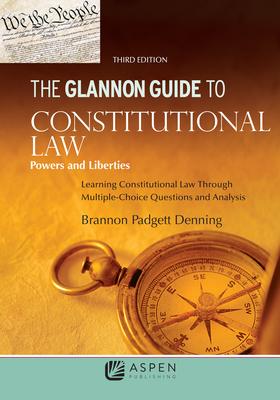Law school classroom lectures can leave you with a lot of questions.
Glannon Guides can help you better understand your classroom lecture with straightforward explanations of tough concepts with hypos that help you understand their application.
The Glannon Guide is your proven partner throughout the semester when you need a supplement to (or substitute for) classroom lecture. Here's why you need to use Glannon Guides to help you better understand what is being taught in the classroom:
- It mirrors the classroom experience by teaching through explanation, interspersed with hypotheticals to illustrate application.
- Both correct and incorrect answers are explained; you learn why a solution does or does not work.
Glannon Guides provide straightforward explanations of complex legal concepts, often in a humorous style that makes material stick.
The Glannon Guide to Constitutional Law: Powers and Liberties offers a powerful combination of well-written explanations, multiple-choice questions, and analyses. Brannon P. Denning presents a clear and thoughtful overview of the constitutional doctrines that govern the structure and powers granted in the U.S. Constitution, as well as those that protect individual rights and liberties. Accessible and interactive, the Glannon Guide series pedagogy teaches you to effectively answer exam questions as you review course content.
New to the Third Edition:
- Combined the government structure and powers volume with the rights and liberties volume into one convenient, economical, and easy-to-use aid
- Updated with recent Supreme Court cases and related questions
- New flowcharts and tables visually illustrate and clarify complex areas of doctrine
- New Closing Closers
Professors and students will benefit from:
- Multiple choice questions at varying levels of difficulty, along with detailed explanations of correct and incorrect answers that all students can use to self-test within each chapter
- Clear, easy-to-understand descriptions of constitutional doctrine, including summaries of all major U.S. Supreme Court cases
- Two sets of Closing Closers that allow for review following completion of the structure and powers and rights and liberties parts
